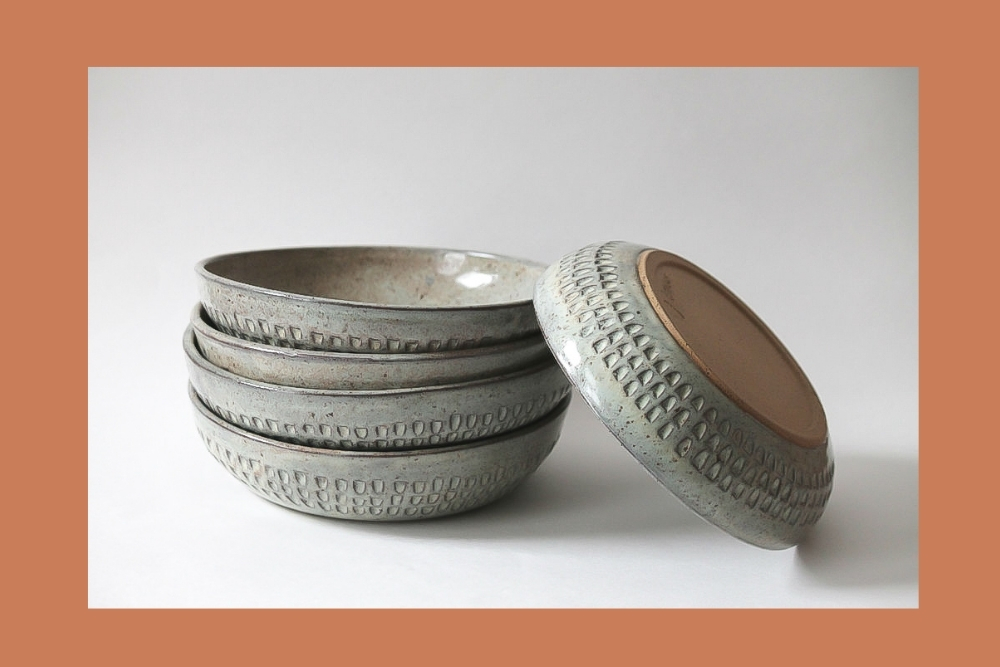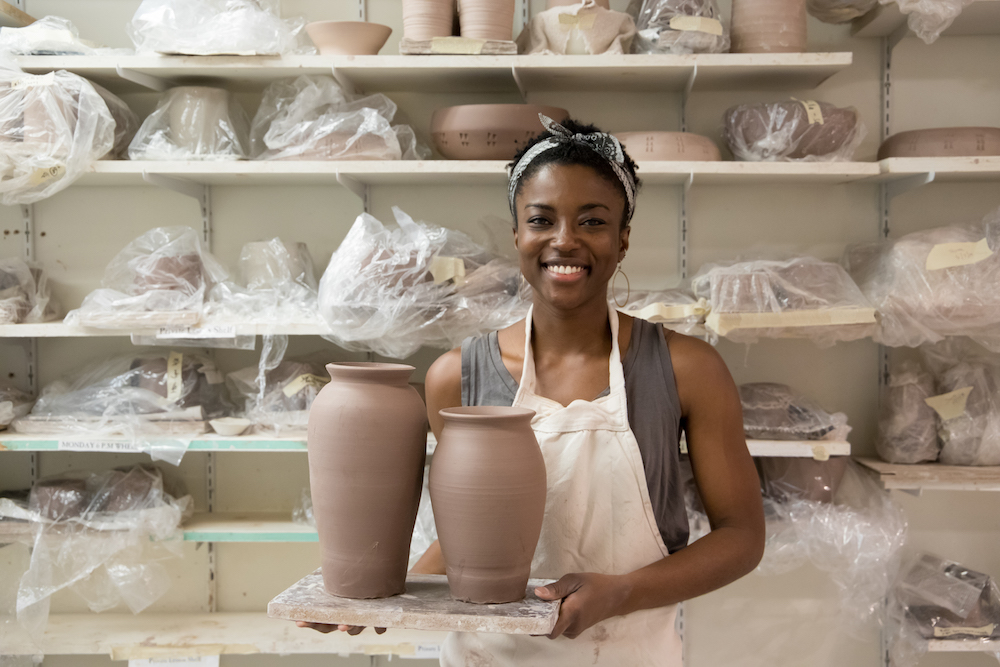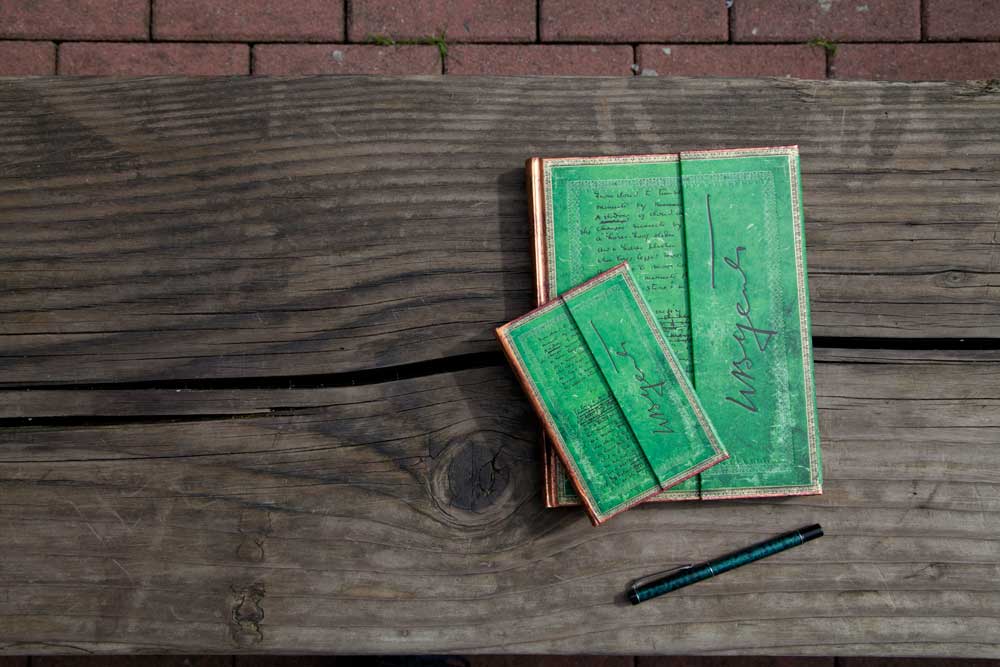Camille Beckles, better known by the moniker “Camille at the Wheel,” is a ceramics artist based in Queens, New York. Her handmade, wheel-thrown ceramics in muted tones and minimalist hand-carved details seamlessly combine beauty and functionality, elevating everyday objects – planters, mugs, plates – to pieces of fine craftsmanship.
We are thrilled to welcome Camille to our blog to learn about her creative journey and the inspiration behind her work.

1) How did you get into ceramics?
I was going through a transitional period during my life and was looking for something centering and creative to help me feel more grounded. I am a cerebral person and so I wanted something that would force me to be present physically so that I wasn’t stuck in my head so much. I don’t recall the original impetus for wanting to take a pottery class, but the circumstances in my life at the time made pottery the perfect therapy. As soon as I took my first class, I was hooked. I loved how it forced me to be intensely focused on what was right in front of me. You can’t be on your phone when your hands are covered in clay. You have to learn how to use your body in new ways. It is a very physical and tactile activity. I quickly learned that being at the wheel was one of the very few times that my brain felt completely silent and calm, and I loved the sense of peace that it brought me. I have been doing ceramics ever since.
2) Were you a creative child growing up?
I was an imaginative child. My preferred medium was always writing. I kept journals as a kid and dreamt of one day becoming a journalist. I loved anything to do with writing, including movies about writers, like Harriet the Spy, and Finding Forrester. I also loved books, stationery, and pens (and still do to this day).
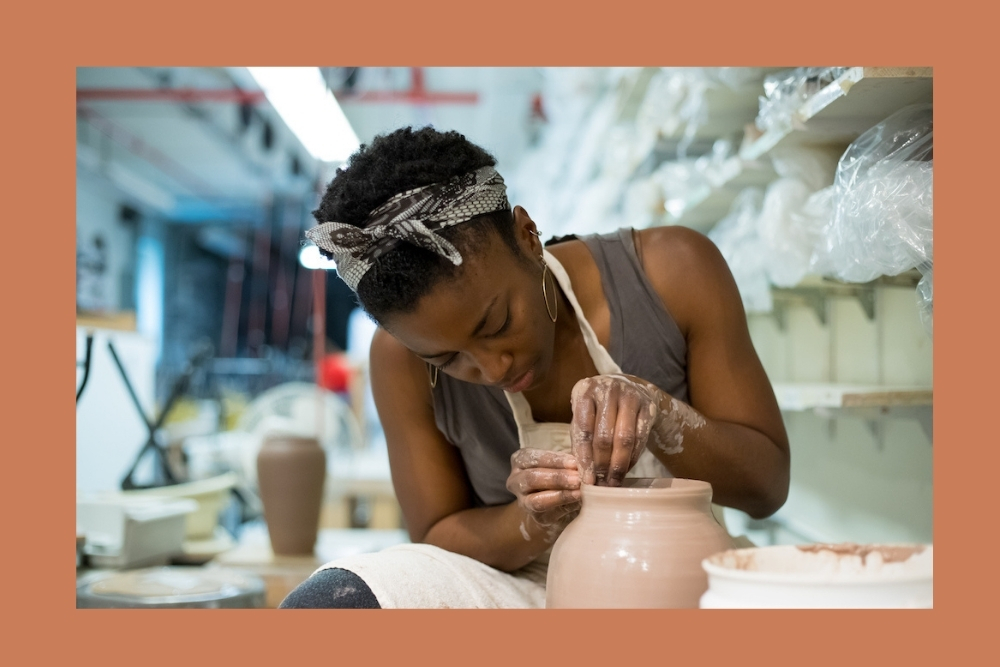
3) How would you describe your personal style and aesthetic?
On my 31st birthday I made a promise to myself not to buy any more gray clothes for an entire year. So, I guess you could say I am practical! I like things that are functional, that go with everything, and that have many uses. Grays – but with pops of color! And accented with impeccable jewelry. In general, with clothes and with other items, I prefer to have a few really great objects that I use all the time rather than a lot of clutter.
4) Why is it important to you that your ceramic pieces combine utility and beauty?
See above! I like to think that my pieces are used in daily life by those who purchase them, and if you are using something every single day, why not make it something that is also beautiful? It is important to derive joy from as many places as we can, and if that means something as simple as that your morning coffee is made better by being sipped from a handmade mug, then that’s wonderful.
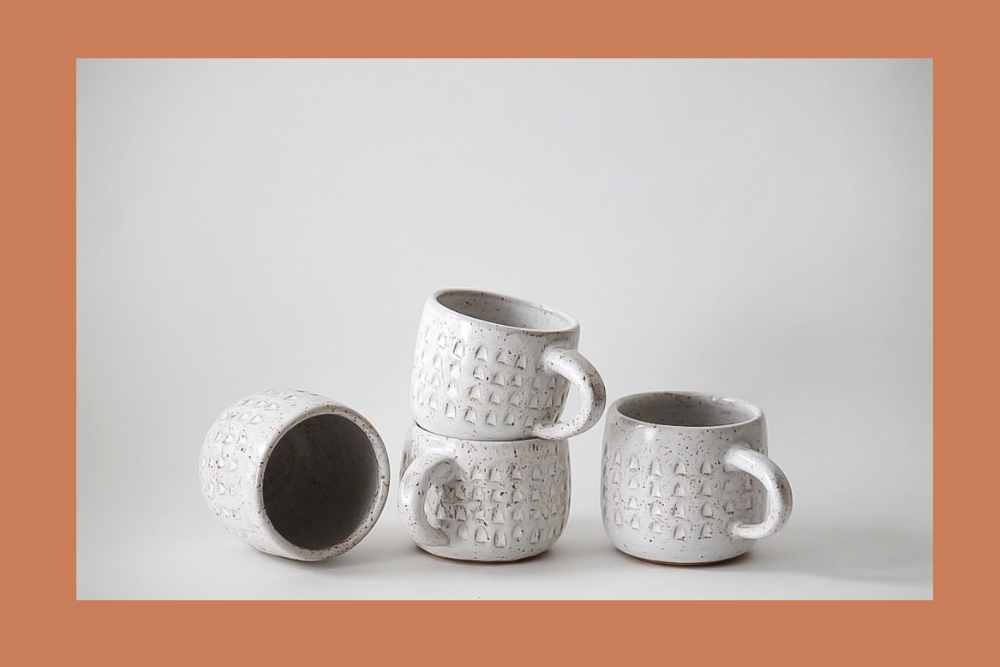
5) You have a very iconic logo. Can you tell us more about your brand story?
My fiancé designed the first version of my logo as a birthday present for me when I first started pottery a couple years ago. At the time, I was watching a lot of YouTube videos from other potters and noticed that they had makers’ marks that they stamped into their pieces as a finishing touch. When I mentioned that I wanted one, he designed the stamp for me as a gift. A couple years later, when I decided that I wanted to launch my business, I worked with my friend Eric Doctor, who is a designer, to modernize and refresh that maker’s mark. Maintaining a clear sense of identity and representation was really important to me, which is why the logo is clearly a black woman with an afro and a headscarf (which is how I often wear my hair). Playfulness was also an important part of my work, and Eric designed the lettering of “Camille at the Wheel” to reflect that. Finally, it was important that the logo could work both as a branding mechanism for my business and as its original intended purpose – a pottery stamp – so the detail had to be fine enough to make it distinct, but simple enough that it could be sized down to mark my pieces.
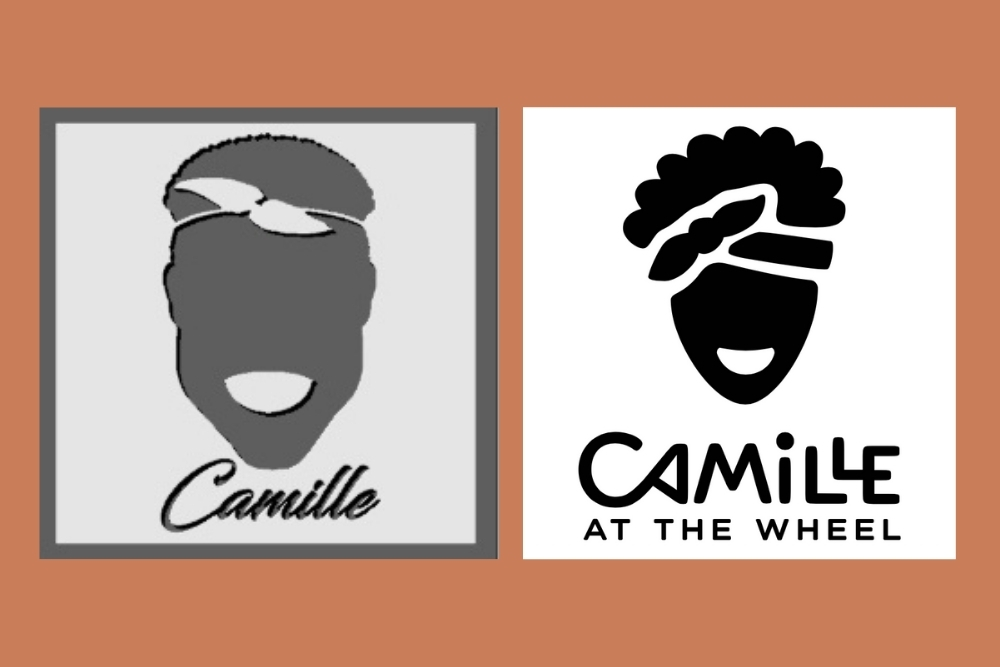
6) Where do you find inspiration?
Primarily from my own needs and curiosities. Many times, my work is driven by a need that I have in my own home for a new planter, or a cup or a bowl. When I land upon a design that I like, I’ll replicate it and create a new set for sale. I am also inspired by the elements of ceramics themselves. There is so much to learn about clay bodies and glaze techniques and new forms that there really is no way to get bored with the craft. Maintaining curiosity about what I can learn next keeps me inspired.
7) Can you tell us more about your creative process?
It relies heavily on repetition. I enjoy making the same form over and over within one sitting and I find that if I am trying to improve a particular skill, this repetition helps me pinpoint what I am doing well and what I can improve. Sometimes the creative process involves starting with a relatively simple form, like a basic cylinder, and then figuring out how I can alter that form later on with different carvings. And occasionally, my creative process involves figuring out how to bring someone else’s vision to life, like on the rare occasions that I work on custom orders. It is fun to discuss an idea with someone and then figure out how to translate that in clay. The most important part of the process is to remain unattached until the piece is finished, as there are so many points in ceramics at which something could go wrong. On a less pessimistic note, remaining unattached also leaves open the door for surprises, and sometimes those surprises are wonderful, like when a glaze combination turns out even better than you could have imagined. It’s helpful to have a general idea of what I am trying to accomplish, but I try to remain flexible enough to make tweaks as I go along.
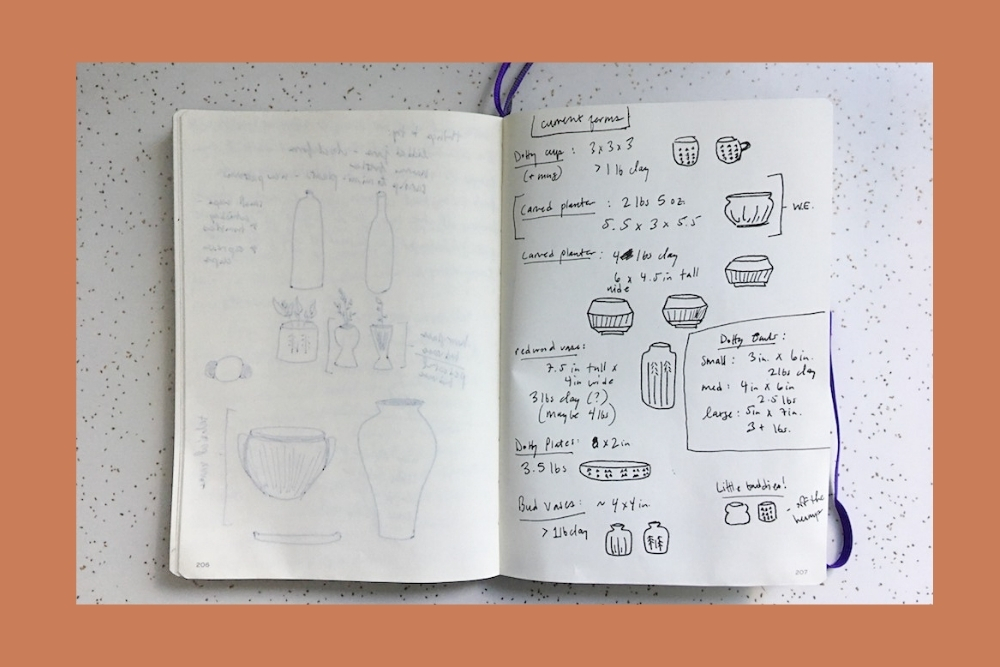
8) We saw the photo you posted on Instagram of your notebook next to your pottery wheel. Can you tell us how your sketchbook is part of your creative process?
I primarily use that sketchbook to document work I have already completed, so that I can remember the general shape and dimensions of pieces that I intend to replicate as part of my regular collection. I also use a notebook to keep track of glaze combinations that I am testing, as well as to document administrative notes like firing fees for my pieces and the dates that I loaded work into the kiln. On rare occasions, I will attempt to sketch out ideas for things I would like to try, but I am not a very good drawer! I do take photos of my pieces, but I prefer having tactile, physical ways to track my work, so I like referring to my notebook rather than having to scroll through photos on my phone. It’s also much better to get a notebook covered in clay than a cell phone!
9) Other than pottery, what are your passions in art or life?
My fiancé and I recently got a car. I live in New York City, and we park on the street. Of late, I am deriving an unreasonable amount of pleasure from snagging the perfect spot, especially if it requires me to demonstrate excellent parallel parking skills. I am very proud of my ability to squeeze my car into a tight spot.
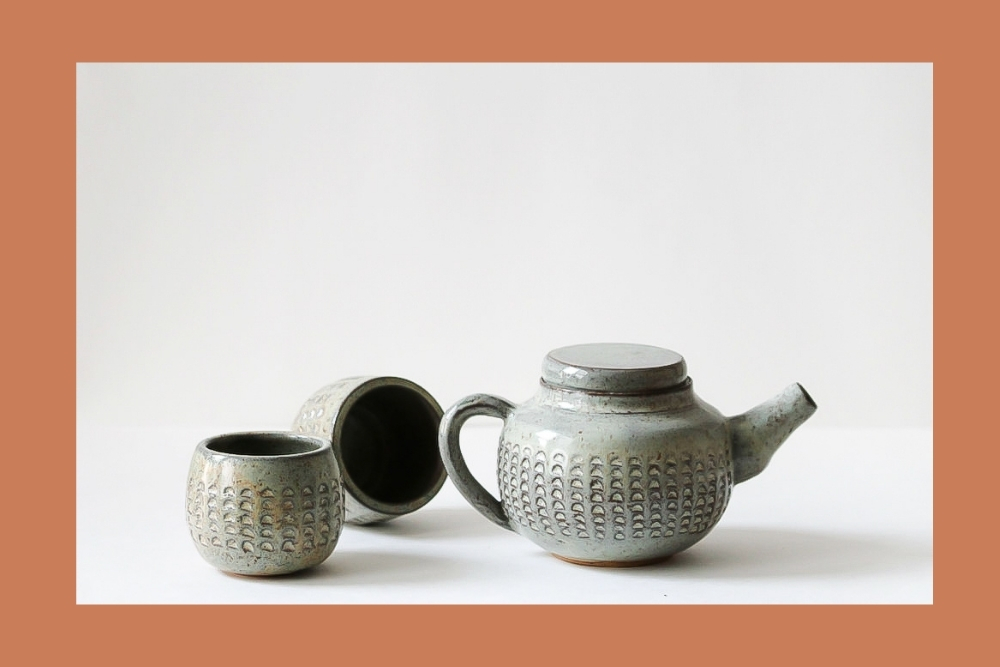
10) We understand you do ceramics as a side hustle, as many artists do. Can you tell us more about balancing work and a creative outlet?
My idea of balance is one where I am intentional about how I spend my time. It doesn’t mean there is always an even split between my full-time job and pottery, but rather that I am setting goals for myself and making conscious choices about how to achieve them. Sometimes this means I will wake up at 6:00 am and spend a few hours at the studio before I start work. Other times it means hitting the studio after the workday is finished. And other times it means forgoing studio time altogether and listening to my body when it is tired and in need of rest. I have extremely busy periods where I am burning the candle at both ends, and periods of intentional rest, where I am saying no to a lot of things in order to protect my capacity. I am very careful with how I schedule my time and I try to keep a structured calendar so that I can fit everything in.
BONUS: We’ve started a new tradition where we ask every featured artist to give a shoutout to any contemporary fellow artist who inspires them, so we can feature them in the future, as a way of #ArtistsSupportingArtists. Please nominate a fellow artist and tell me why you admire their work.
Kacey Ziegler (@kaceyziegler on Instagram). She is a fellow potter (we used the same community studio before the pandemic hit) and she is not only a talented ceramicist but a stellar visual artist as well. Her work combines many techniques including wheel throwing, hand building, and altering pieces. Often, she will add surface decorations to her pieces. Prior to the pandemic, she would do subway sketches of fellow passengers during her commute. She also sometimes shares sketches of her pottery and it’s amazing to see how closely her finished work mirrors the ideas she sketched out ahead of time. She has a really clear vision and style and I admire her work quite a lot!
To learn more about Camille’s work, please visit her website or her Instagram account.
